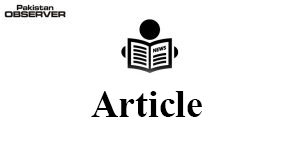IRFAN NAWAZ
LAWS are meant to protect people from being harmed by others. Without laws, society experiences tyrannies – strong rules that suppress the weak. In democratic system of governments, political institutions make laws. In Pakistan, the top ladder of the law-making process is Parliament – National Assembly and Senate. Any law introduced in Parliament has to pass through both Houses and then ratified by the President. Under both houses, Standing Committees, comprising sitting elected representatives, are constituted to deliberate on the new laws and submit their reports to Parliament before the laws are passed. After enactment of any law, one of the government ministries is custodian of that law and has the mandate to implement it in letter and spirit. In 2010, the 18th Constitution Amendment empowered the provinces to take appropriate measures for child welfare. At ICT level, numerous laws related to the protection and welfare of children have already been enacted. Currently, Pakistan’s federal law for child marriage is based on an Act that was passed in 1929 by the then rulers who fixed the age of children for consent at 14. It was further increased to 16 years through Muslim Family Law Ordinance, 1961. To ensure the children’s right to education that enshrined in the Article 25-A of the Constitution of Pakistan, ICT Right to Free and Compulsory Education Act, 2012 was enacted. This law made it compulsory for every child between the ages of 5 to 16 years to be enrolled in the schools for education. Under this law, children in the capital have to be enrolled in schools and Educational Advisory Councils are mandated to monitor peripheral areas of schools for ensuring 100 per cent enrollment. The Ministry of Federal Education and Professional Training is implementing the said law. The unrest in Swat Valley and other tribal areas has brought thousands of migrants to the capital city. Meagre economic resources of these families forced them to internally traffic their children for numerous purposes including domestic work, child labour, and prostitution. In order to address the issue of external trafficking, Prevention of Human Trafficking Ordinance, 2002 is being implemented through Federal Investigation Agency and internal trafficking has been criminalized by amendment in the Pakistan Penal Code, 1860 through Criminal Law (2nd Amendment) Act, 2016. Section 377-A & 328-A of this law also proposes strict punishment for perpetrators of child sexual abuse and cruelty to child. Children of migrant families have been observed to be involved in laborious work in commercial establishments of Islamabad, the children work in workshops, factories, shops and industries regardless of age. Despite constitutional protection under Article 11(3) that prohibits employment of children under the age of 14 years in the hazardous environment, children continue to be employed by the establishments. In the same vein, the Employment of Children Act, 1991, regulates the working hours for adolescents and does not allow the children below the age of 14 years to work in establishments. The Directorate of Labour and Industries under the ICT Administration has the authority to inspect and monitor child labourers in establishments of the ICT. The children working on roads involve in begging and loitering on signals requires counselling and rehabilitation services that will be provided through Child Protection Institute, being established under recently enacted ICT Child Protection Act, 2018. This law empowers the authorities to rescue children found in vulnerable situations, provide them shelter, education and rehabilitation services to restore these vulnerable children in the society as productive elements. The expanding usage of technology and the covert dark web phenomena is an industry for commercial sexual exploitation and prostitution. The cases of child sexual exploitation and child pornography are reported and yet most of the cases are unreported due to the cultural tradition of ‘social stigma’ attached to the victim. Though the law of Prevention of Electronic Crimes Act, 2016 and the Criminal Law (2nd Amendment) Act, 2016 are the major legal framework to curb this menace, still there is a need to develop exclusive child rehabilitation mechanism. Nevertheless, Cyber Crime Cell, FIA is also striving to counter the growing menace of child pornography and online exploitation. To the extent of ICT, sufficient laws are in place and government structures are enforcing these laws in letter and spirit. In sum, there are a myriad of laws that exist to protect the rights of children in ICT however, there is a need to refine the procedures of existing government bodies through the development of Standard Operating Procedures and increasing interagency coordination for better service delivery and outcome. —The writer is a Child Rights Strategist, Ministry of Human Rights, Islamabad.










